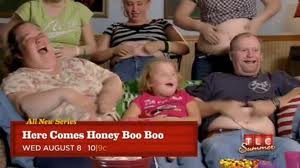
Sex, alcohol, drugs, cowboy hats and boots, and quick draw
gunfights elicit images of just about any location other than the American South.
However, these images come from just below
the Mason-Dixon Line in rural Kentucky.
Rural
Kentucky is about as close to the lawlessness of Appalachia that an audience
can get without actually visiting the region.
What the audience really needs is a tour guide through the crime-ridden
foothills of Kentucky.
Enter Raylan
Givens (Timothy Olyphant), a native of Harlan, Kentucky, and a U.S. Marshal
freshly redeployed from his long stint at the Marshal’s office in Miami,
Florida.
Raylan lives life in the fast
lane, and his actions are almost always justified, at least in his mind.
Raylan rarely
takes prisoners, but he is fair.
He only
fires his weapon when he feels the need to protect himself; in fact, he only
shoots to kill.
Raylan is not a stone
cold killer; although, many characters agree that he harbors some hostility.
Yet, Raylan always tries to give people a way
to save themselves.
For example, the
very first scene of the first episode of
Justified
features Raylan killing a gun runner after he refused to leave Miami by the
deadline Raylan offered him.
This scene
is the genesis of Raylan’s new journey through the foothills of Kentucky;
indeed, it even gives rise to his unofficial catchphrase, “It was justified.”
If we look at Raylan’s character as a metaphor,
it is possible to draw parallels to the post-9/11 foreign policies of the
United States. Raylan’s character is not
a strictly shoot-first-ask-questions-later lawman. Rather, he deliberately gives his opponents
the opportunity to end their shenanigans before something bad happens. In a sense, he tries diplomacy before
resorting to violence; though, he has no qualms with putting a man down. Similarly, the United States has on numerous
occasions given foreign leaders and groups various opportunities to cease
hostilities. If diplomacy fails, then
military action is taken. For example, the
United States warned Saddam Hussein to rid Iraq of weapons of mass
destruction. When Hussein refused, the
Iraqi War resulted, which eventually lead to Hussein’s capture and
execution. In a word, Raylan and the United
States are not unalike in spirit.
Basing the
series in real locations like Lexington, Kentucky and Harlan, Kentucky is
crucial to the success of the show.
If
the setting was a fictional location, such as Mayberry from the
Andy Griffith Show, then there would be
little connection to the real world.
More importantly, the audience would be unable to make the connection of
reality to fiction.
In a sense, the
series would lose all sense of concreteness.
It would be difficult to take seriously a crime drama that occurs in a
fictional location.
However, the
realness of the locales in the series allows for a real world connection for
the audience.
The realness of the
locations allows the audience to suspend its disbelief just enough for the show
to be successful, whereas a fictional location would require a greater
suspension of disbelief.
The settings of
Justified are real and tangible, and
this characteristic helps to solidify the realness of the characters in the
series.
Raylan’s
character develops throughout the first season of Justified. He makes human
errors, and he learns from his mistakes.
Yet, Raylan Givens is much more than just a man. He is the embodiment of the spirit of the
United States, especially the North. He
is an “other” in his home state, a fact that is bolstered when Raylan admits to
not wanting to be in Kentucky. It would
seem that not just any outsider could tame the wild Appalachian hillbillies;
indeed, only a native Kentuckian returned from extended exposure to “Northern”
culture could bring civility to the foothills.
Only the spirit of the United States, forged by Northern ideals, can
quell the wild Southerner. Raylan Givens
is that spirit in human form. Raylan
Givens is the redeemer of the Kentucky foothills. One could even say he is the patron saint of
lost causes, if one did not already exist. -- Michael Beaver










